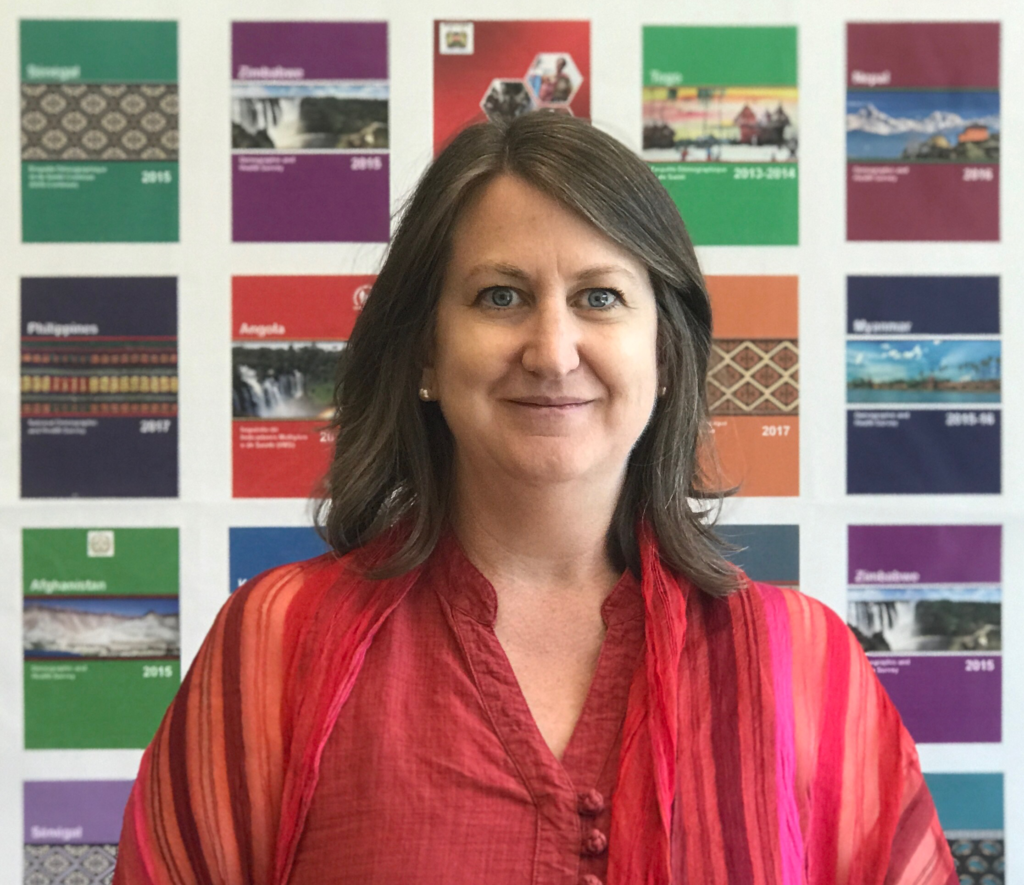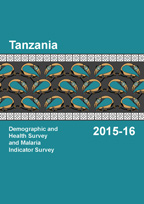Inside The DHS Program: Q&A with Livia Montana

Name: Livia Montana
Position title: Deputy Director
Languages spoken: French, Spanish, a little Swahili, a word or two in Arabic, a touch of Portuguese
When did you start at The DHS Program? I was hired in 1999 as the first GIS Analyst after completing my master’s degree in Population Geography. The DHS Program at that time had just started collecting GPS data. I established the first protocol and manual for the collection of GPS data which remains part of the core survey methodology today.
I grew in that role until 2006. I wanted to learn more and be able to do more, so I went back to pursue my Doctorate in Public Health at Harvard School of Public Health. Following that, I became the Director of Research for the Center for Population and Development Studies at Harvard for five years before returning to The DHS Program in May 2019.
What is your role at The DHS Program? My role as Deputy Director is to translate all of our day to day survey work into the big picture in The DHS Program. Specifically, the country work falls under me, so I try to keep up-to-date on what’s happening in all the surveys all the time.
I also bring an outside perspective to the program. Having been away from The DHS Program for a number of years, I feel like I have a better perspective of what the community of DHS data users cares about and how people value and use the data, while at the same time understanding how the extraordinary work is achieved with all of our partners.
COVID-19 has affected all ongoing DHS surveys in one way or another. We have postponed a number of surveys that were supposed to take place this year, and we have shifted to virtual technical assistance where we can. The country demand for DHS surveys has not decreased, so I am closely monitoring when we will be able to resume field activities. For the latest updates on COVID-19 from The DHS Program, visit the new COVID-19 feature page.
What’s your favorite trip to date? One trip I enjoyed was to Cambodia in 2005. We had completed the 2005 Cambodia DHS and were in the planning stages for the next DHS survey. I traveled with Bernard Barrère, the previous Deputy Director. He was working on the new survey design, and I was teaching a workshop to staff from the Ministry of Health and Ministry of Planning on using GIS to combine their health information system data with DHS to explore some of the findings in the DHS survey. Bernard and I took little motorcycles to dinner at a very nice French restaurant together. That’s a nice memory I have of the previous Deputy Director.
Favorite DHS survey cover: I love the colorful covers that have fabrics that represent patterns from the countries where we work, such as the 2015-16 Tanzania Demographic and Health Survey and Malaria Indicator Survey (TDHSMIS).
What work are you most proud of? Working with country counterparts to develop and carry out the surveys. I loved teaching workshops, seeing when participants get what you are trying to teach them. Capacity strengthening was always part of The DHS Program, but it has grown tremendously and is now a formalized effort through The DHS Program Learning Hub for instance.
What developments in data collection or global health, in general, are you excited about right now? Biomarkers. DHS surveys always collect data about people’s demographic and health histories, but there are many health conditions and risk factors that we can measure directly, such as testing for malaria, hemoglobin levels, micronutrients, and things we have yet to consider that can provide additional information to help us understand health and population change.


